Author: Steve Thanos
Hops are typically added at a couple main spots in the brewing process— during the boil, often referred to as kettle hopping, which will lend the beer varying levels of bitterness due to the isomerization of alpha acids, or during fermentation, aka dry hopping, which is intended to boost hop aroma and flavor. Historically, adding hops to the mash was purportedly done as a way to improve lauter efficiency while also contributing a subtle layered hops character to beer.
More recently, mash hopping has received a bit more attention by those interested in maximizing the desirable characteristics in modern hop-forward styles. One notable recipe that includes a mash hop addition is Janet’s Brown Ale, a deliciously hoppy dark beer invented by the late Mike “Tasty” McDole. However, given what’s known about hops, many claim that adding them to the mash has not qualitative impact and is simply wasteful.
I’ve never embraced mash hopping in my brewery, admittedly due to the my agreement with the claims made by naysayers that it has little if any impact on beer character. That said, a number of people I know to make excellent beer rely on this method, which left me wondering if I might be missing out on something. Curious to see for myself, I designed an xBmt to test it out!
| PURPOSE |
To evaluate the differences between an American IPA that was mash hopped and one that was not mash hopped.
| METHODS |
For this xBmt, I designed an American IPA recipe using a couple modern hop varieties where only one batch would receive a hefty dose of Cascade in the mash.
Ray Of Light
Recipe Details
| Batch Size | Boil Time | IBU | SRM | Est. OG | Est. FG | ABV |
|---|---|---|---|---|---|---|
| 5.5 gal | 60 min | 63.1 | 5.8 SRM | 1.061 | 1.009 | 6.83 % |
| Actuals | 1.061 | 1.009 | 6.83 % | |||
Fermentables
| Name | Amount | % |
|---|---|---|
| Ye Olde Pale Malt | 10 lbs | 86.96 |
| Vienna | 1 lbs | 8.7 |
| Victory Malt | 8 oz | 4.35 |
Hops
| Name | Amount | Time | Use | Form | Alpha % |
|---|---|---|---|---|---|
| Cascade | 120 g | 0 min | Mash | Pellet | 4.7 |
| Strata | 28 g | 20 min | Boil | Pellet | 12 |
| Sabro | 28 g | 10 min | Boil | Pellet | 14 |
| Strata | 28 g | 5 min | Boil | Pellet | 12 |
| Sabro | 28 g | 2 min | Boil | Pellet | 14 |
| Sabro | 56 g | 5 days | Dry Hop | Pellet | 14 |
| Strata | 56 g | 5 days | Dry Hop | Pellet | 12 |
Yeast
| Name | Lab | Attenuation | Temperature |
|---|---|---|---|
| Capri | 75% | 32°F - 32°F |
Notes
| Water Profile: Ca 125 | Mg 20 | Na 8 | SO4 310 | Cl 56 |
Download
| Download this recipe's BeerXML file |
After collecting two sets of water, adjusting them to my desired profile, and lighting the flame to get them heating up, I weighed out and milled the grains.
Once the water for each batch was properly heated, I incorporated the grains then checked to make sure both were at the same target mash temperature.
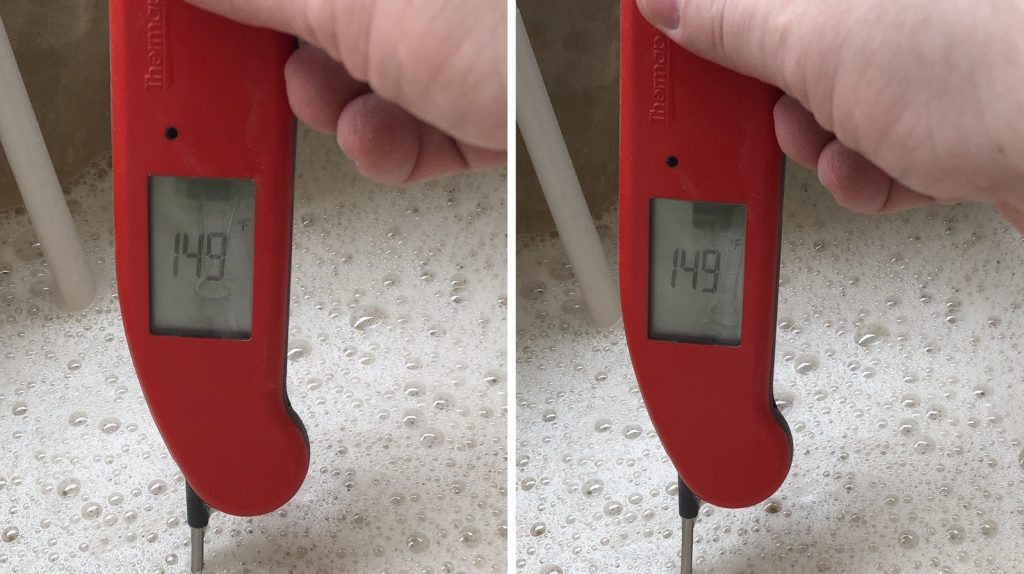
At this point, I added 120 g of Cascade hops to one of the mashes.
While the mashes were resting, I prepared the kettle hop additions.
Once each 60 minute mash was complete, I removed the grains then boiled the worts for 60 minutes before rapidly chilling them with my JaDeD Brewing Hydra IC.
Refractometer readings showed both worts achieved the same target OG
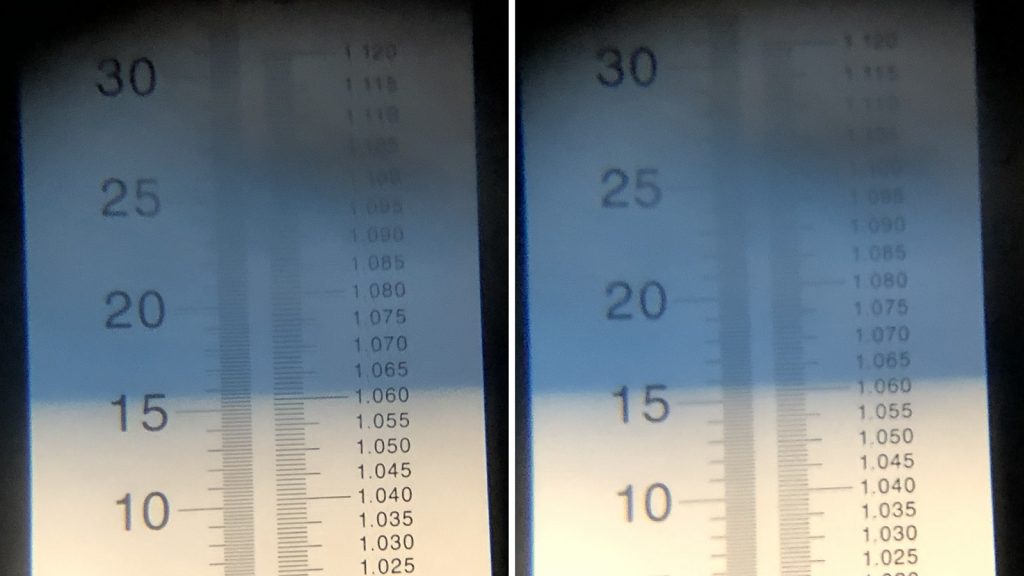
After racking identical volumes of wort from each batch to separate fermenters, I placed them in my chamber controlled to 68°F/20°C and pitched a pouch of Imperial Yeast I22 Capri into each.
After a few days of fermentation, I added the dry hops to both batches then let them sit for another 2 weeks before taking hydrometer measurements showing they reached the same FG.
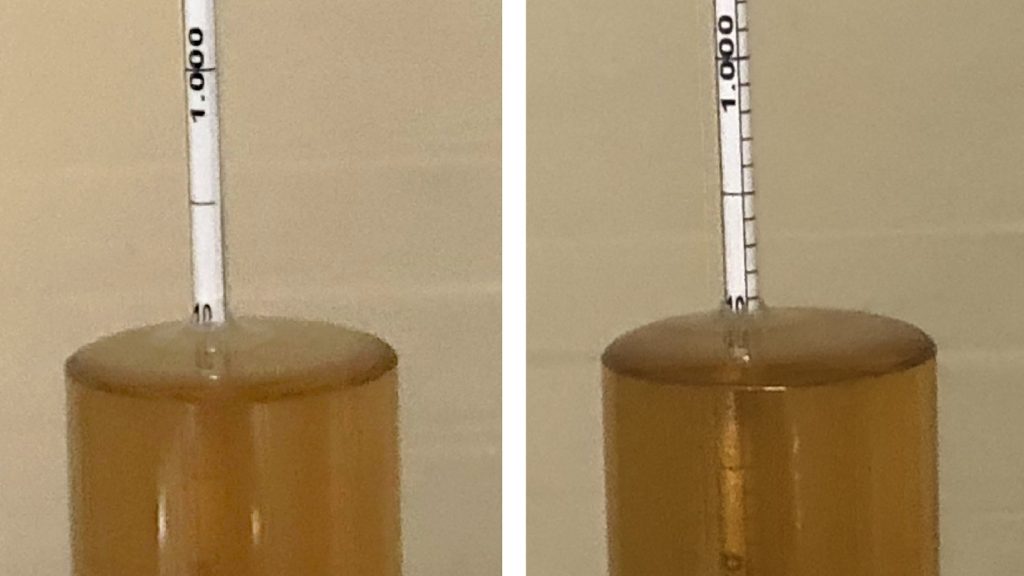
At this point, I then pressure transferred the beers to kegs and placed them my keezer where they were left to condition for 2 weeks before they were ready to serve.
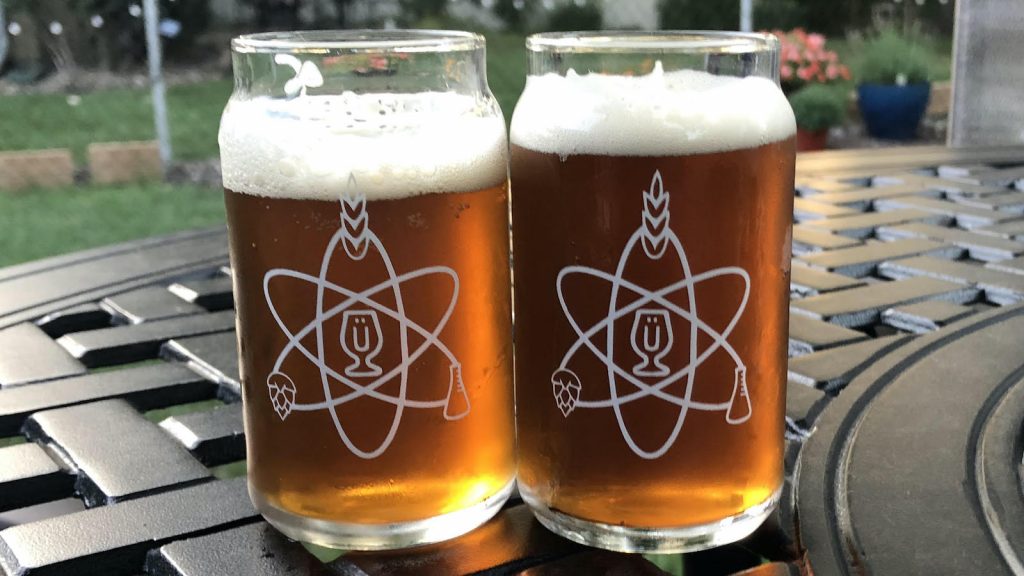
| RESULTS |
Thanks to the C.H.A.O.S. Brew Club for inviting me to collect data at their annual Summer BrewBQ! A total of 36 people of varying levels of experience participated in this xBmt. Each participant was served 2 samples of the mash hopped beer and 1 sample of the beer that was not mash hopped in different colored opaque cups then asked to identify the unique sample. While 18 tasters (p<0.05) would have had to accurately identify the unique sample in order to reach statistical significance, only 13 did (p=0.42), indicating participants in this xBmt were unable to reliably distinguish an American IPA that was mash hopped with 120 g of Cascade from one that did not receive a mash hop addition.
My Impressions: Out of the 5 semi-blind triangle tests I attempted, I correctly identified the odd-beer-out just 2 times. To my palate, these beers were identical in every way, sharing characteristics of strong citrus, passion fruit, and stone fruit with hints of coconut.
| DISCUSSION |
IPA is come to be one of the world’s most popular styles of beer, and it owes this success to hops, which contribute a variety of desirable characteristics ranging from piney to fruity. In order to pack as much hop aroma and flavor in beer as possible, some brewers step outside the standard approach of kettle and dry hopping, opting to add a charge of hops to the mash. The fact tasters in this xBmt were unable to reliably distinguish an American IPA that was mash hopped with 120 g of Cascade from one that was not mash hopped suggests any impact was minimal enough as to be imperceptible.
When it comes to mash happing, there seems to be little disagreement that it contributes little in the way of bitterness or aroma to beer, and yet some continue to employ the method under the belief it provides a more balanced hop character. Advocates of this method might contend the high amount of kettle and dry hops these xBmt beers covered up the impact of the mash hops, though that would also suggest mash hopping may not add much to the style it’s so often used in– IPA.
IPA is one of my favorite styles to brew, and I’m always open to exploring methods for getting as much hop character in them as I can. While this xBmt may not have returned a significant result, I’m very interested in the relatively new idea that mash hopping with varieties rich in bound-thiols then fermenting with a yeast that unbinds those thiols can increase the perceived fruit pungency in beer.
Funny story– prior to joining the Brülosophy crew, I’d heard them use the term “pulling a Ray” to describe the unfortunate scenario where a contributor kicks a keg of an xBmt beer before all the data is collected. As a contributor, I asked why an xBmt on mash hopping hadn’t been done, which is when I learned of the origin of “pulling a Ray,” hence the name I gave this recipe.
If you have any thoughts about this xBmt, please do not hesitate to share in the comments section below!
Support Brülosophy In Style!
All designs are available in various colors and sizes on Amazon!
Follow Brülosophy on:
FACEBOOK | TWITTER | INSTAGRAM
If you enjoy this stuff and feel compelled to support Brulosophy.com, please check out the Support page for details on how you can very easily do so. Thanks!


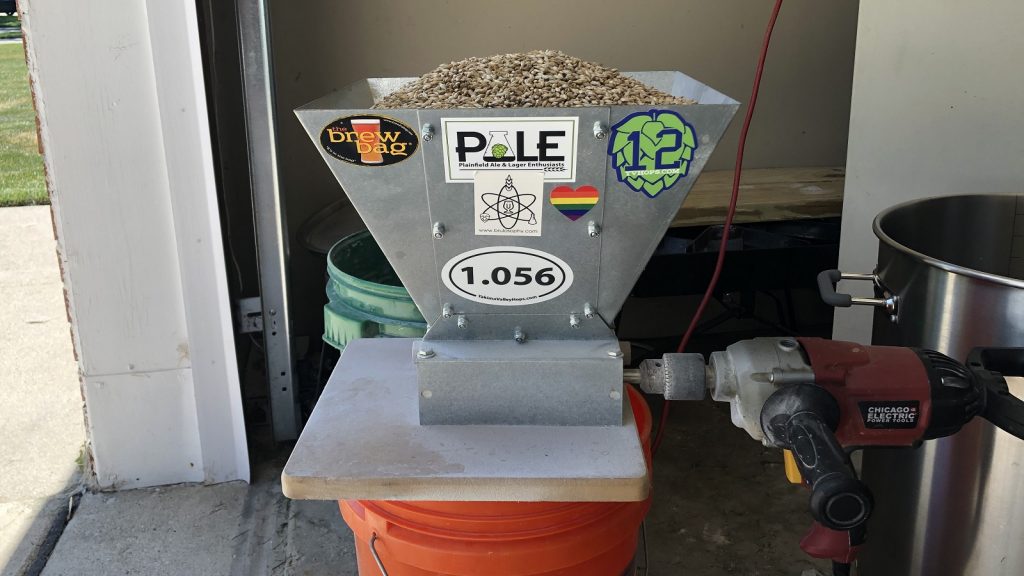
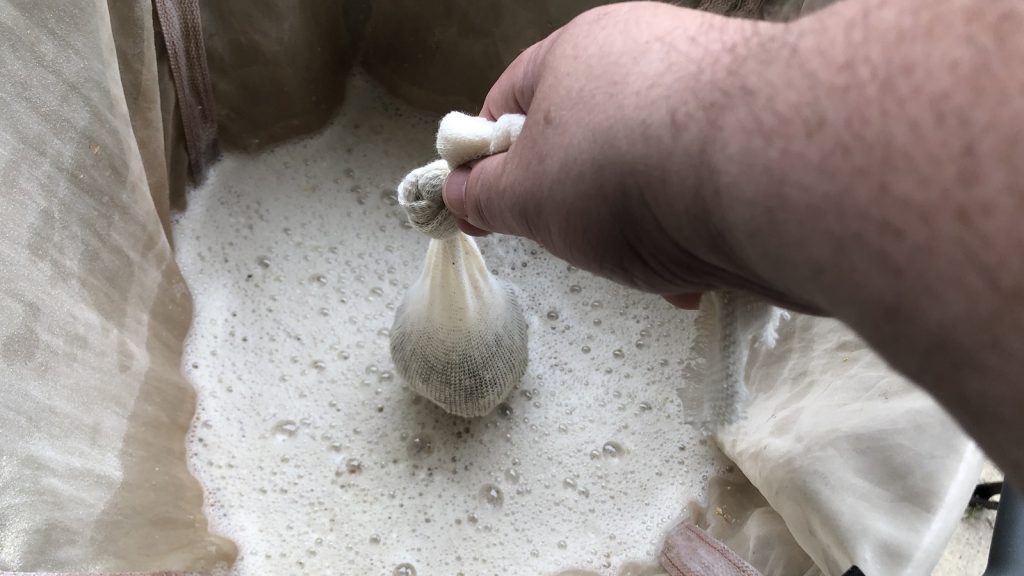
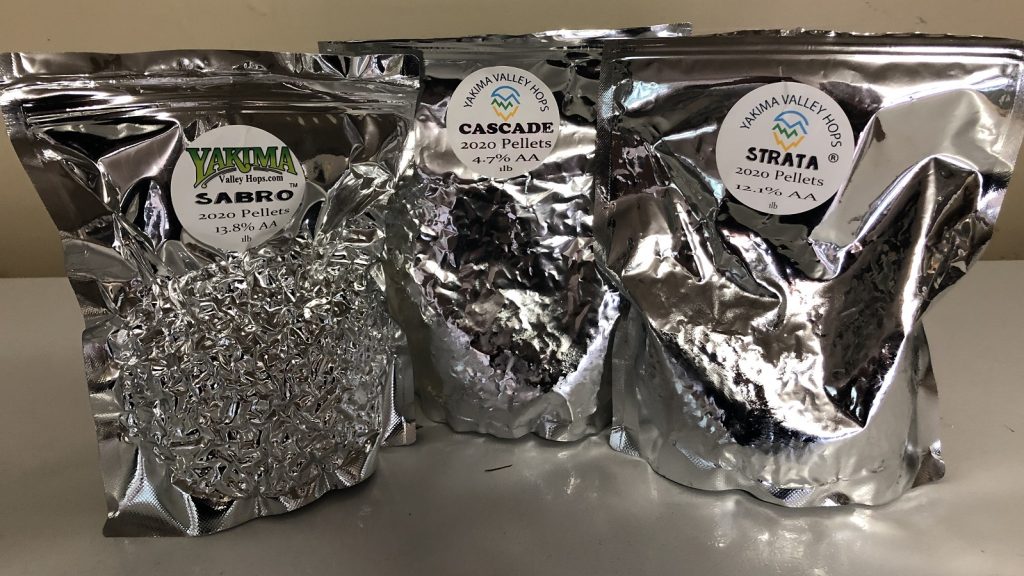
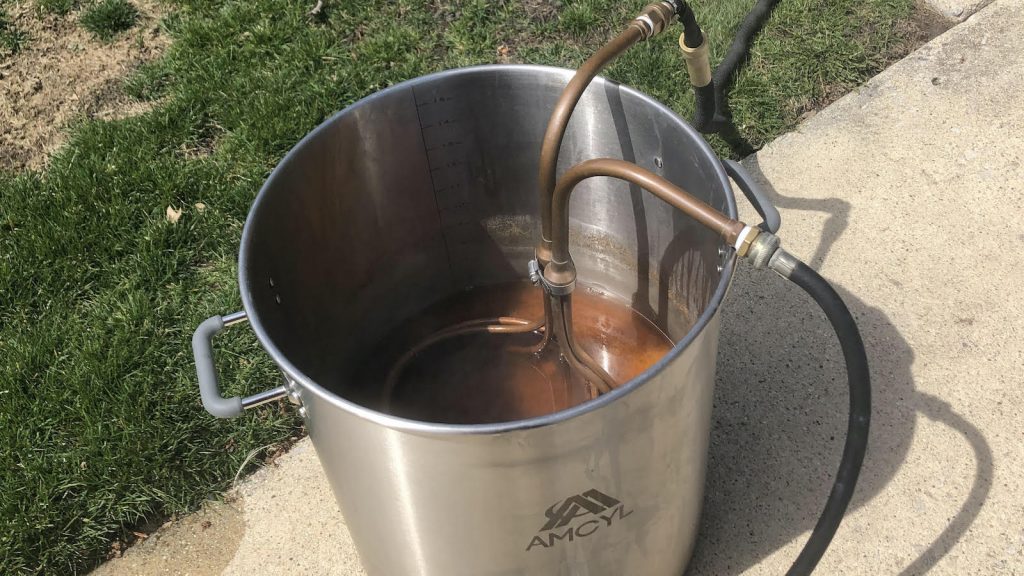
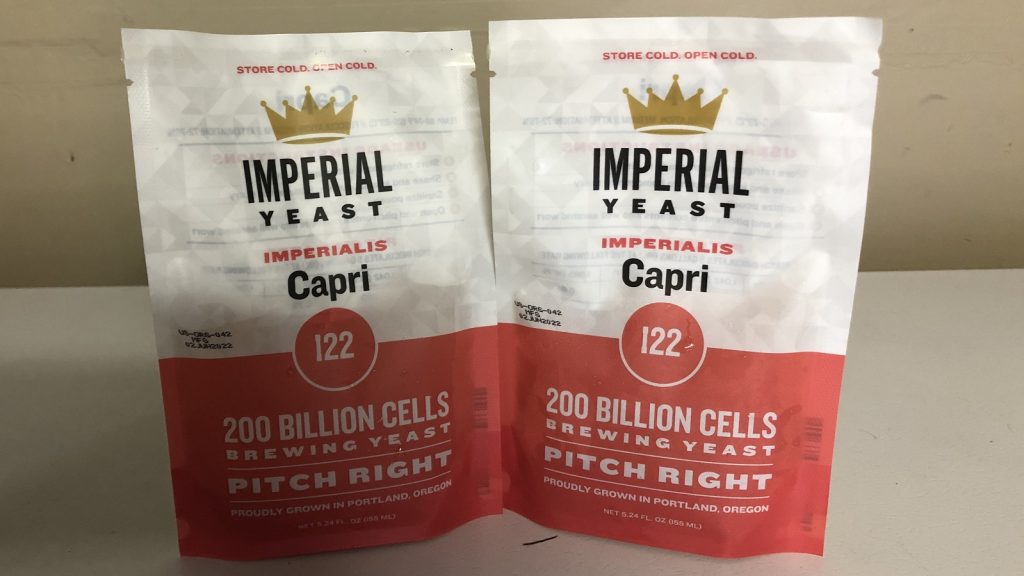











19 thoughts on “exBEERiment | Impact Mash Hopping Has On An American IPA”
Why did you use a hop bag/sock for your mash hops! One would think that it would be okay to throw them in loose as you are going to lauder the wort anyway. And many brewers feel that your utilization suffers with a hop bag. What was your thinking on that?
“More recently, mash hopping has received a bit more attention by those interested in maximizing the desirable characteristics in modern hop-forward styles”. – as far as I know this recent interest is due to the new GMO strains that promise to release bound thiols.
“a number of people I know to make excellent beer rely on this method, which left me wondering if I might be missing out on something” – Shouldn’t you be using one of this fancy gmo yeast :)? Capri, as far as I know, is a blend, not a gmo…
I22 Capri is a hybrid, not a blend. And correct, it is not gmo.
Good experiment, but maybe I am slow. I have no idea what the relationship of “pulling a Ray” and kicking a keg means. Could someone explain?
By reading the article I’m guessing someone named Ray had kicked a keg (drank all the beer) before all the required data was received. I don’t know if Ray had tried a mash hop experiment when he kicked the keg or if this was just the first time the story was told to the author.
In order for mash hopping to make an effect, bound thiols need to be released. Ive done countless batches of ipa and neipa and there is an incredible difference in aroma. But the yeast needs to unleash these thiold. Omega, star party will do the trick. Right effort wrong yeast.
What I believe to be the original “Pulling a Ray” incident can be found here:
https://brulosophy.com/2015/05/25/wort-aeration-pt-1-shaken-vs-nothing-exbeeriment-results/
Ray Found used his MACC IPA recipe as the test beer. If you’ve even tried that recipe, you would know that it is a really, really tasty drink (it’s part of my regular brewing rotation). Apparently Ray, his family, and/or his friends think as highly about that recipe as I do, as they polished off that keg after data had been collected from a mere 7 blind tasters.
Based on Steve’s description of how his beer got it’s name, I can only assume that at some point in the 7 years since Ray originally “pulled a Ray,” there was an attempt at a mash-hopping exbeeriment that was foiled by somebody (perhaps Ray again?) pulling a Ray.
That’s a great writeup, just as entertaining as the recent one about brewing with Powerade Zero.
I mash hop for totally different reasons. Since I grow my own hops at home, I always have lots of last season whole leaf hops left over. I use leaf hops instead of rice hulls whenever I might need lautering help or as part of the “story” for epic IPAs. Better used for something imperceptible than thrown out!
Am I reading the article correctly that the 120 grams (4.2 ounces) of hops put in the mash were not put into the control beer as later hop additions and people still weren’t able to significantly discern the difference?
I am also trying to figure this out. Was this an addition that was only made to the mash hopped beer? Or were the same 120g of cascade added in the kettle for the other batch?
120g of Cascade was only added to the mash hopped beer.
Interesting data point — since this is a fairly popular method, I’d be interested in tests in other scenarios to see if the results hold true with different variables.
The yeast temp in the recipe is different from the write up. I assume that’s a typo?
Scott Janish’s book talks about how grain, yeast, trub debris are capable of absorbing hop acids. So it’s possible that the grains in the mash absorbed enough of the acid from the massive mash hop addition.
Why weren’t the mash hops put in loose instead of all 4oz crammed into a small bag?
Why weren’t the mash hops added loose instead of all 4oz crammed in a little bag?
Gordon, While researching for this xBmt I came across this article from YVH https://yakimavalleyhops.com/blogs/news/mash-hopping-101. Since I wanted to make sure hop material did not find its way into the wort, I decided to use the muslin bag.
I can see why you don’t want the hop material to get into the boil. It just seems that the large dose of hops in the small bag wouldn’t get enough contact with the mash to impart much flavor and the amount of debris from loose 4.7A% wouldn’t add much bitterness. I’m curious why you decided on 4oz instead of the recommended 2.5oz?
Thanks
Not sure just any hop will biotransform in mash hopping. What I’ve read is some varieties do better than others. Citra, saaz, perle to name a few.